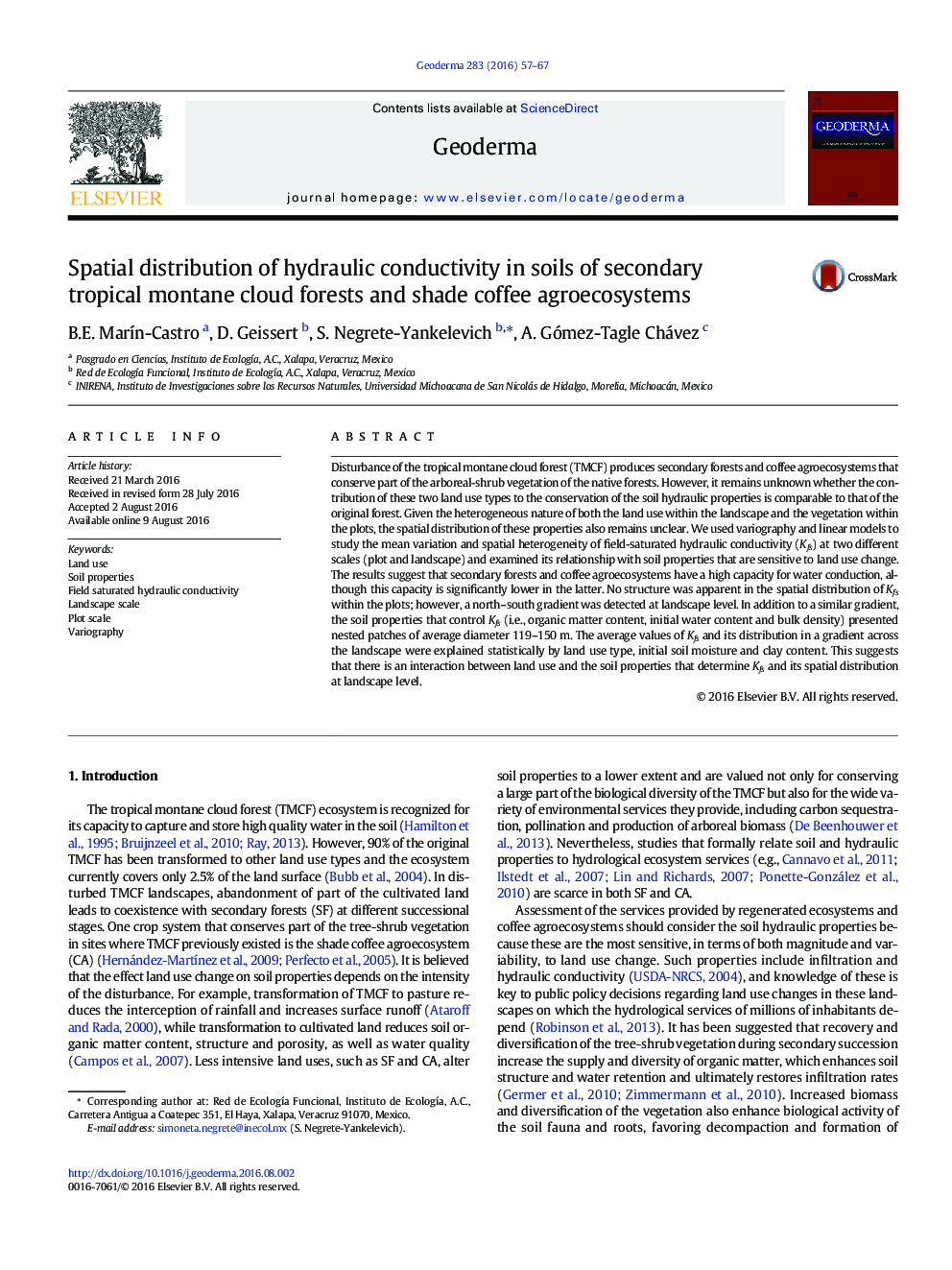| کد مقاله | کد نشریه | سال انتشار | مقاله انگلیسی | نسخه تمام متن |
|---|---|---|---|---|
| 4572850 | 1629434 | 2016 | 11 صفحه PDF | دانلود رایگان |
• Saturated hydraulic conductivity (Kfs) was studied in secondary forest and coffee plots.
• Mean and spatial variation of Kfs were analyzed with variography and linear models.
• Coffee plots had a lower Kfs (43.2 cm h− 1) than secondary cloud forests (94.8 cm h− 1).
• Kfs had no spatial pattern within plots but occurred in a gradient in the landscape.
• Kfs mean and spatial patterns were explained by land use, initial soil moisture and clay.
Disturbance of the tropical montane cloud forest (TMCF) produces secondary forests and coffee agroecosystems that conserve part of the arboreal-shrub vegetation of the native forests. However, it remains unknown whether the contribution of these two land use types to the conservation of the soil hydraulic properties is comparable to that of the original forest. Given the heterogeneous nature of both the land use within the landscape and the vegetation within the plots, the spatial distribution of these properties also remains unclear. We used variography and linear models to study the mean variation and spatial heterogeneity of field-saturated hydraulic conductivity (Kfs) at two different scales (plot and landscape) and examined its relationship with soil properties that are sensitive to land use change. The results suggest that secondary forests and coffee agroecosystems have a high capacity for water conduction, although this capacity is significantly lower in the latter. No structure was apparent in the spatial distribution of Kfs within the plots; however, a north–south gradient was detected at landscape level. In addition to a similar gradient, the soil properties that control Kfs (i.e., organic matter content, initial water content and bulk density) presented nested patches of average diameter 119–150 m. The average values of Kfs and its distribution in a gradient across the landscape were explained statistically by land use type, initial soil moisture and clay content. This suggests that there is an interaction between land use and the soil properties that determine Kfs and its spatial distribution at landscape level.
Journal: Geoderma - Volume 283, 1 December 2016, Pages 57–67
